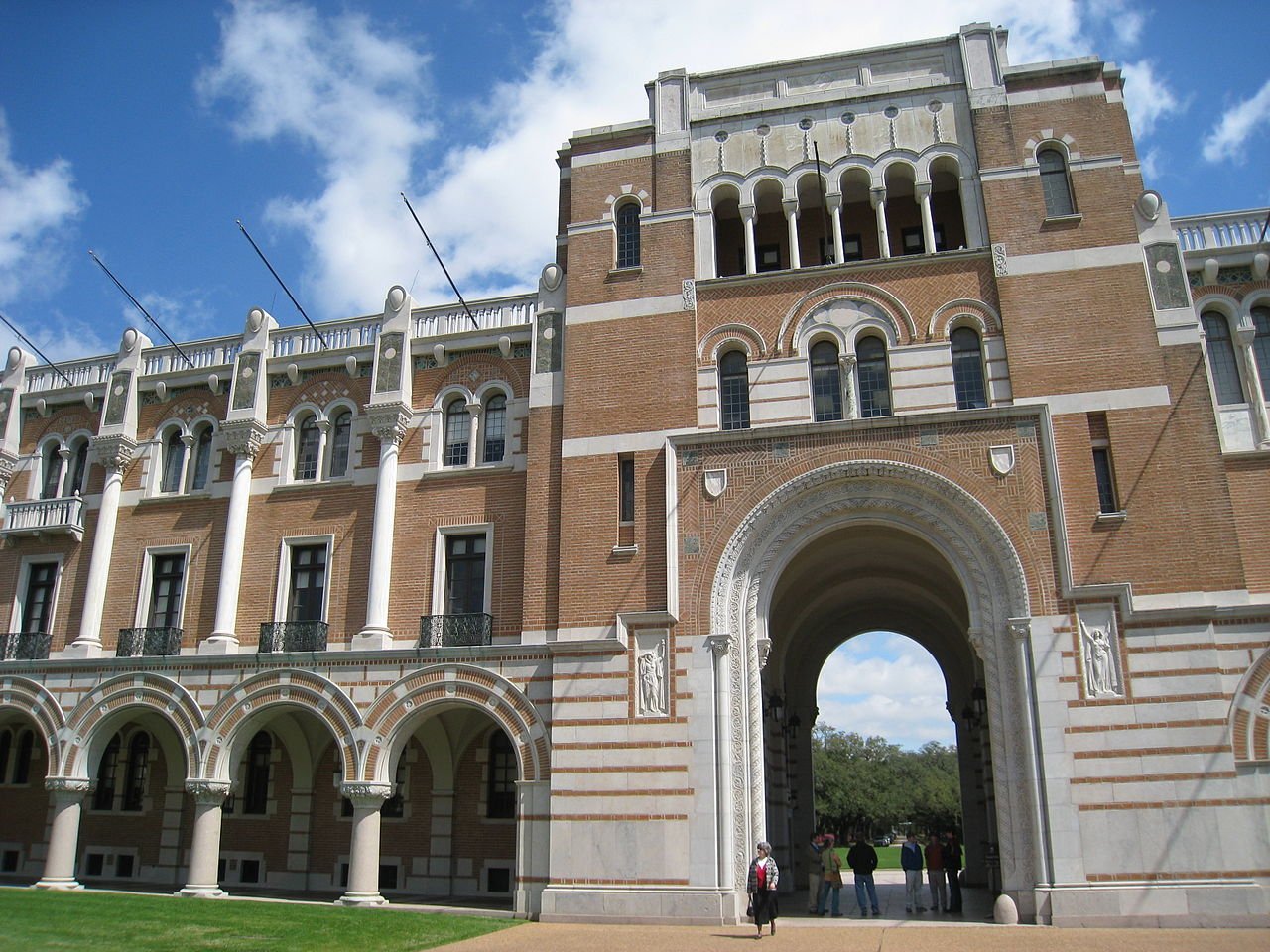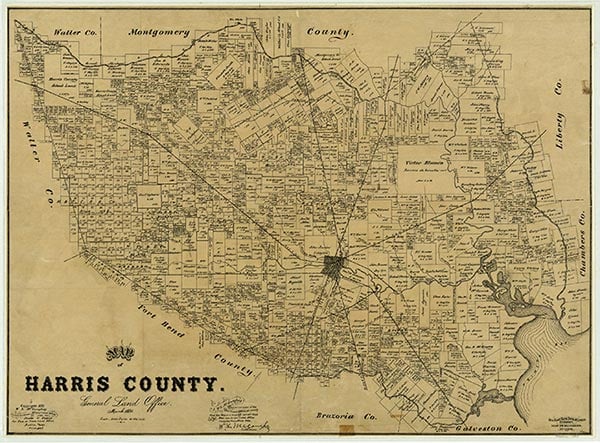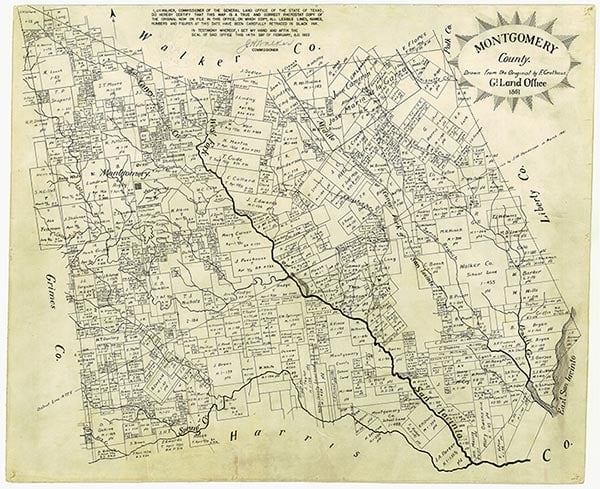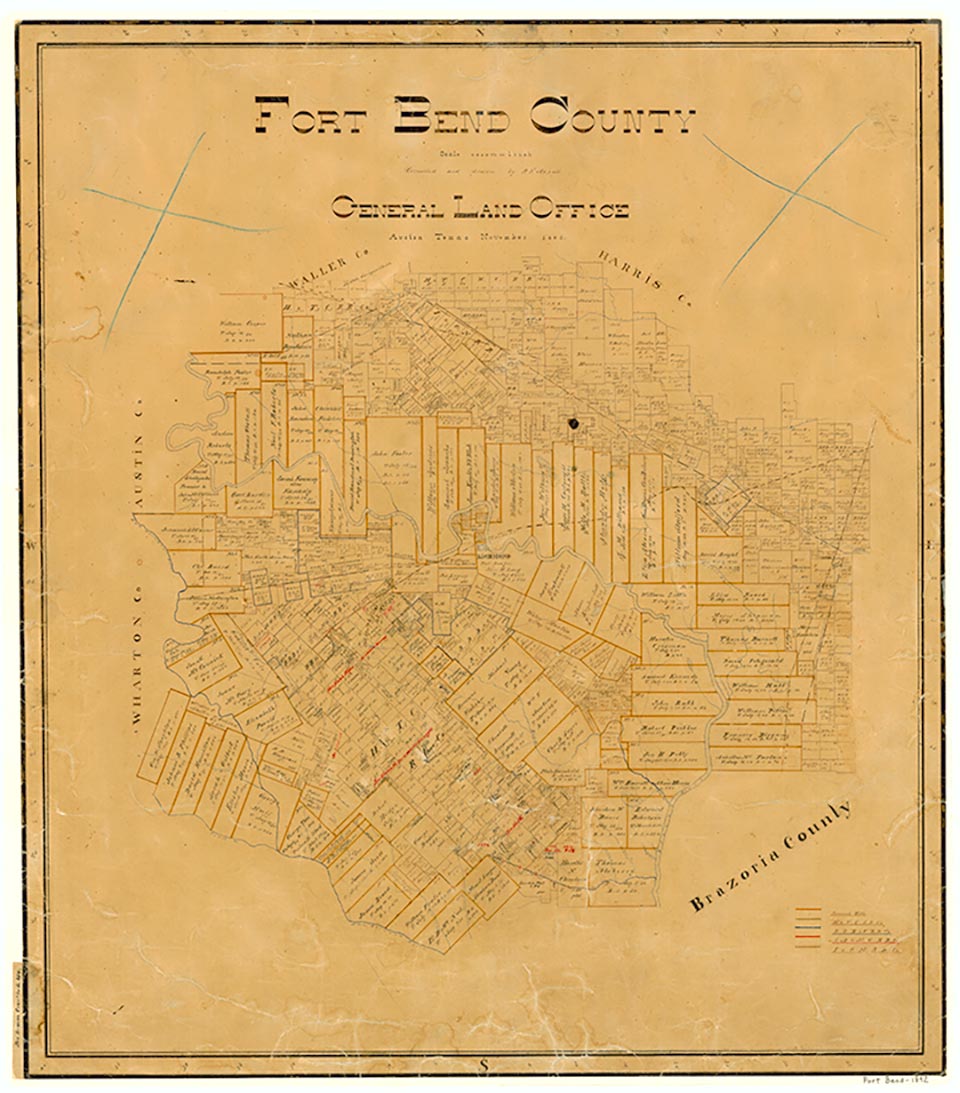Rice University

Fondren Library, Rice University

Sally Port at Rice University, Houston, TX

Rice University, a private, independent, coeducational university in Houston, opened in 1912 as the William Marsh Rice Institute. It was chartered in 1891 by former Houston merchant William Marsh Rice with a $200,000 interest-bearing note payable to the Rice Institute upon his death. Subsequently Rice made other gifts to the institute, all payable after his death. However, when he died in 1900 in New York City, his probated will directed that his fortune should go to his lawyer. After an extensive investigation and sensational trial it was determined that Rice's butler, in league with the lawyer, had chloroformed Rice to death in order to collect upon a forged will. When the estate was settled in 1904, approximately $3 million was given to the institute as a separate capital fund added to the original endowment, which had grown to almost $3.3 million. At the time the university opened in 1912, the endowment stood at approximately $9 million, a sum that enabled all students to attend the university without paying tuition-a privilege that did not end until 1965. The original charter very generally prescribed an institution "dedicated to the advancement of literature, science, and art." The board of trustees in Houston determined that it would be a university and in 1907 appointed mathematician and astronomer Edgar Odell Lovett of Princeton University as president with directions to plan the new institution. After worldwide traveling, discussion, and faculty recruitment, Lovett oversaw the opening in 1912, marked by an elaborate international convocation of scholars. From the beginning Lovett intended Rice to be a university "of the highest grade," and despite several decades of financial stringency following the early 1920s, the institution has striven to maintain that vision. The entering class of seventy-seven students had an international faculty of ten (Julian Huxley, for example, was the first professor of biology, and Harold Wilson from the Cavendish Laboratory at Cambridge was the professor of physics) and two major academic buildings (with an elaborate plan for additional buildings) by the renowned Boston architectural firm of Cram, Goodhue, and Ferguson. The Thresher, an independent student newspaper, began in 1916, and that same year the Honor Code, a cherished Rice tradition, was adopted by the student body. By 1924 the entering freshman class was limited to about 450, and the undergraduate enrollment has been carefully controlled ever since. In 1987 it was approximately 2,600. The graduate enrollment has grown gradually to about 1,300.
Under Lovett's direction Rice Institute first developed major strength in the sciences and engineering, though distinguished instruction was offered from the beginning in the humanities and architecture. The curriculum broadened, and the faculty increased greatly in size after World War II under the administration (1946–60) of physicist William V. Houston, as the name change in 1960 to Rice University acknowledged. A number of new buildings were constructed in two periods of growth, the late 1940s and the late 1950s. Graduate work, present from the beginning, was enlarged. In 1987 advanced degrees were offered in more than thirty fields. Moral, social, and economic imperatives drove the university successfully to seek legal authority in 1964 to break the founder's charter in two regards: permission to admit students without regard to race and to charge a modest tuition. Further expansion, especially in the humanities and social sciences, came in the 1960s and 1970s during the administrations of chemists Kenneth S. Pitzer (1961–68) and Norman Hackerman (1970–85). In 1961 the National Aeronautics and Space Administration located the Manned Space Flight Center (now the Lyndon B. Johnson Space Center) on land made available by Rice, and in 1962 the university established the nation's first department of space science. The Journal of Southern History has been published at Rice since 1959; Studies in English Literature was founded at Rice in 1961; and the Papers of Jefferson Davis project has been headquartered at Rice since 1963. In July 1985 Rice University Studies (formerly Rice Institute Pamphlet, begun in 1915) became Rice University Press. The Shepherd School of Music and the Jesse H. Jones Graduate School of Administration were added in 1973 and 1976 respectively.
John B. Boles | © TSHA

Adapted from the official Handbook of Texas, a state encyclopedia developed by Texas State Historical Association (TSHA). It is an authoritative source of trusted historical records.

- ✅ Adoption Status:
Belongs to
Rice University is part of or belongs to the following places:
Date of Founding Notes
Chartered in 1891; classes first held in 1912 as Rice Institute; as William Marsh Rice University, 1960
People
-
President, Dr. Reginald DesRoches 2022–Present
Currently Exists
Yes
Place type
Rice University is classified as a College or University
Tags
External Websites
- Rice University (Official Website)
Fall Enrollment Count, 2022 View more »
8,672


